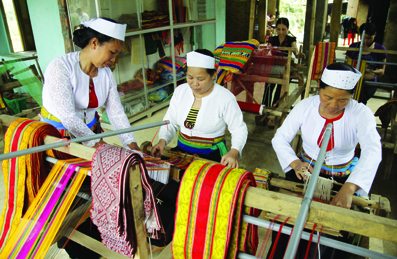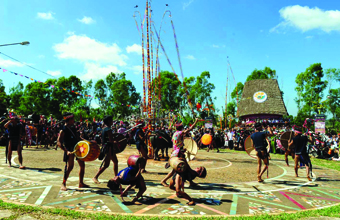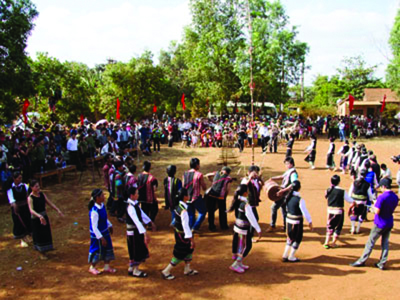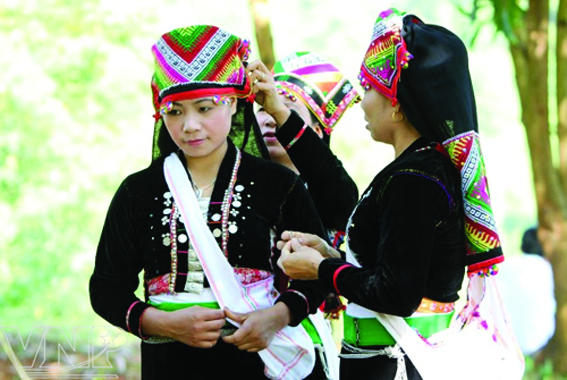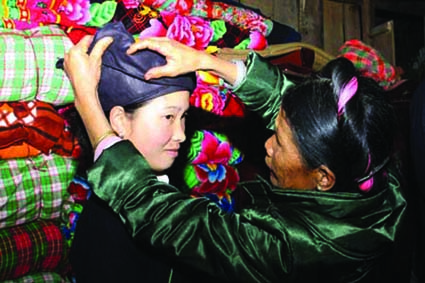Ta Thi Tam
Ethnology Institute
The Hre live mostly in the central province of Quang Ngai with a population of nearly 127,500. The group also inhabits dispersedly in the central provinces of Binh Dinh, Ninh Thuan, Binh Thuan and Kon Tum.
The Hre live in a village (called play) which is usually named after a mountain, river or field or a feature of the area, but barely after a person. A village is often close to farming areas and water sources where houses are built on hillsides. Each village is headed by an old man who is selected by villagers for his wisdom, wealth and prestige. The village head takes charge of all village affairs, ranging from conducting village rituals, organizing irrigation and construction work, and guiding villagers in farming work to settling disputes and village fines. This man is the decision maker for all village affairs even though he consults other old villagers. The village leader is highly respected by villagers who give him certain favor, such as helping him in farm work during harvesting time and offering him wine first in ceremonies. The position of village head is not passed from father to son, but to the most suitable man elected by villagers.
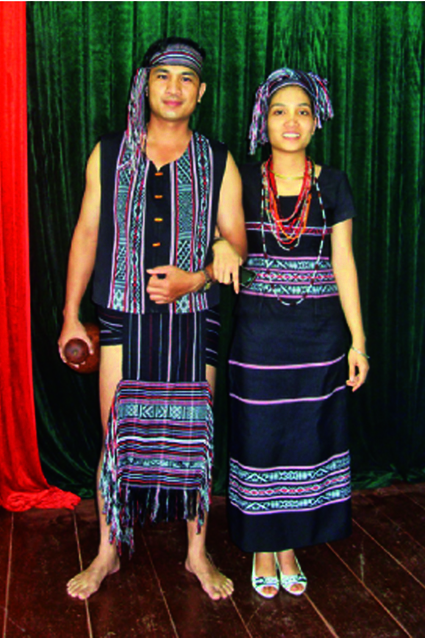 |
Costumes of the Hre__Photo: Internet |
The second prestigious person after the village head is the sorcerer who serves the community and individual families in religious events. A Hre sorcerer usually has his job passed from his father.
In the past, Hre women did the weaving and sewing for the whole family, but now they can buy clothes.
Traditionally, a Hre woman wears a two-layer dress, a five-panel shirt and a headdress. A man wears a long black turban which is wound around the head and tied at the nape of the neck with two ends hanging down the back. He can also wear a folded white handkerchief wrapped around the head with two ends stuck behind the ears. A man wears a buttoned short black shirt with long sleeves and a red fringe and a colored and patterned loincloth. Both men and women wear their hair coiled into a bun and silver or wooden brooches. Today, Hre people dress in casual clothes like other Vietnamese, except some old men still wearing loincloths.
A Hre stilt-house is about one meter above the ground and has a simple structure which can be easily taken apart when the family moves to another place. Each house has two lines of props made of good wood. The roof, supported by long wooden beams, is made of thatch and tied to the house frame through lianas and thus can be easily separated. A Hre home is not divided by wattle walls. The left part of the house is for men and for receiving guests and the other part for women. Next to the part where women stay is placed the main stove while the rice mortar is placed at the left part of the house.
The Hre live in a small family of between four and six members. Sons and daughters are equal in receiving inheritance and only the one taking care of the parents, usually the youngest child, may receive more property. Like other ethnic groups, the Hre have some taboos between a daughter- or son-in-law and members of her husband’s or his wife’s family. For instance, a daughter-in-law is not supposed to have meal with her father-in-law or brother-in-law and to neither touch the latter’s personal articles nor sit on his seat or bed. The same rule applies to a man when having contact with his mother or sister-in-law.
A Hre wedding is usually held at the year end. Either the bride or groom can stay with the other’s family which is responsible for holding the wedding. The wedding is attended by the bride’s or groom’s family, relatives and all villagers. During the wedding banquet which must have ruou can (rice wine drunk out from a jar through stalks), people talk and sing cheerfully. A room is prepared for the new couple where formalities symbolizing attachment of the bride and groom take place, including offering each other betel and areca and tying a thread to the other’s wrist. The groom’s party taking the bride home must include a young girl while the bridal family also sends a girl to accompany the bride. The bride must enter her husband’s home through the main entrance door. The same rule applies when the groom is taken to his wife’s home. The accompanying girl or boy will stay with the bride or groom at the first night in the latter’s new home. The next morning, the new couple visits the other’s parents before returning their new home.
Having children is the wish of every Hre couple. During her pregnancy, a woman carefully takes care of herself in the hope of giving birth to a healthy child. Every month, she holds a ritual to pray for gods’ support for her child. A Hre woman gives birth at home next to the fire with the help of a midwife and some women. The umbilical cord of the child is cut with a knife and then wrapped in an areca spathe which is then placed in a cave or under a tree in the forest or buried near the house. The mother is not supposed to eat fish, egg, chicken, buffalo meat and chilly within the first month after delivery. When the baby is one month old, the family holds a naming ceremony for him. A child is not supposed to be named after family members or relatives, even deceased ones. Hre people often give their children ugly names in the belief that they can be brought up healthily without being caught by evil spirits which are fond of beautifully named children. The name of a girl is always preceded by Y to distinguish with that of a boy, such as Y Hla and Y Bi. The common way to call a boy is eo and a girl, yeng.
The Hre have a rich folklore treasure with lively legends handed down from one generation to another. Young people often sit by the fire listening to old men telling tales about the history of the group. The gong is a typical musical instrument played by Hre men during festive occasions or at leisure time. Other musical instruments include buffalo hide drums and different kinds of flutes.-

